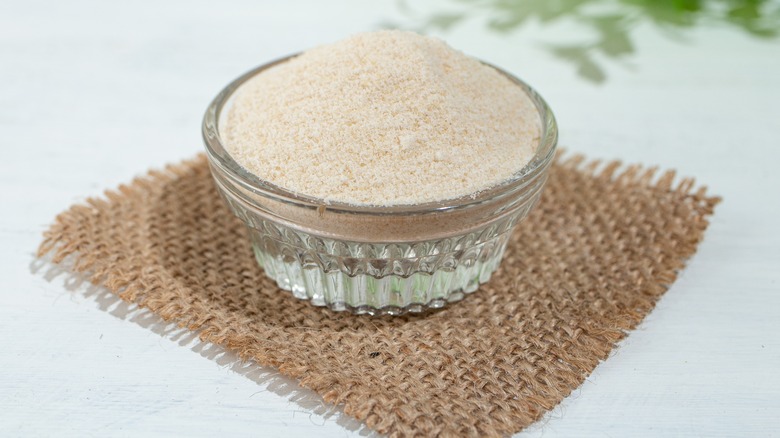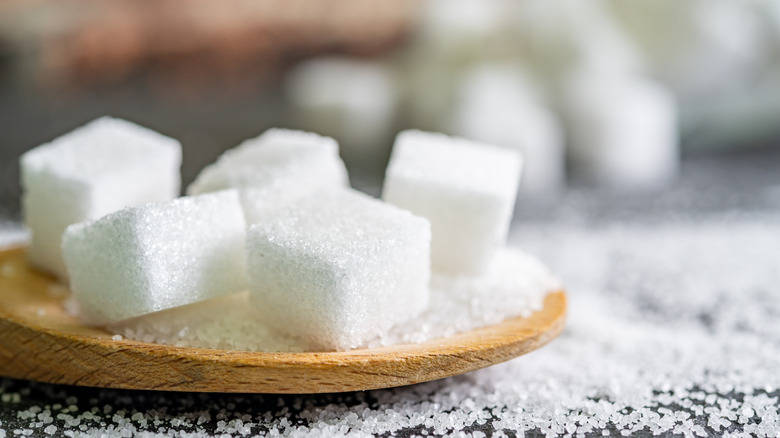Why A Group Of Bakers Recently Sent The USDA A Letter About Sugar
Sugar is one of a baker's best friends. Not only does sugar provide sweetness in baked goods like cookies and cakes, notes Fine Cooking, sugar is an essential leavening agent, meaning it helps bread doughs and batters to rise. But that's not all. Sugar impacts baking in a myriad of other vital ways, observes Imperial Sugar, from aiding in chemical reactions to providing color through caramelization, and acting as both a stabilizer and a preservative.
Given the enormous importance of sugar to the baking industry, it should come as no surprise that bakers are concerned with what they believe are major problems right now with both pricing and availability. So concerned, according to Food Business News, that the president of the Independent Bakers Association (IBA), Nick Pyle, recently sent a scathing letter to the U.S. Secretary of Agriculture, terming the U.S. Department of Agriculture (USDA)'s failure to properly manage supplies and prices amid rising inflationary pressures a "fiasco."
"Mr. Secretary, one of your Department's many jobs is to effectively manage the U.S. supply of sugar and ensure users can buy what they need," Pyle wrote in the IBA's June 24 letter to the Secretary of Agriculture, Tom Vilsack (as quoted in the outlet). "Frankly, the Department is failing miserably to protect sugar users and consumers."
Why sugar prices are high and what the USDA can do to help
Pyle's claims in the letter require some context. The USDA's sugar program dates back to the 1981 Farm Bill, which gave the USDA the authority to adjust tariffs and price supports to keep national prices competitive with the world market. Markets everywhere, however, are currently feeling the tandem effects of the COVID-19 pandemic and the Russian invasion of Ukraine, which have disrupted the worldwide food chain, driving inflation and leading to rising food costs. As CNBC reports, these still-rising food costs have also been exacerbated by spiraling energy costs and export bans.
Despite inflation and supply chain pressures, though, sugar prices have remained low internationally, as raw sugar prices recently dropped below 19 cents per pound, according to NASDAQ. Contrast this price with the 68 cents per pound which Pyle and the IBA note is the current U.S. price for cane sugar, per Food Business News, and the concerns of bakers become much easier to understand.
Pyle's letter, referenced in Food Business News, claims U.S. sugar prices are higher than they've been in 50 years. Skyrocketing prices are the impetus for the IBA's request that Secretary Vilsack and the USDA take aggressive actions, increasing sugar supplies and boosting the tariff-rate quota, which the IBA believes will steady domestic sugar prices and bring the U.S. into more of a balance with the world market.

